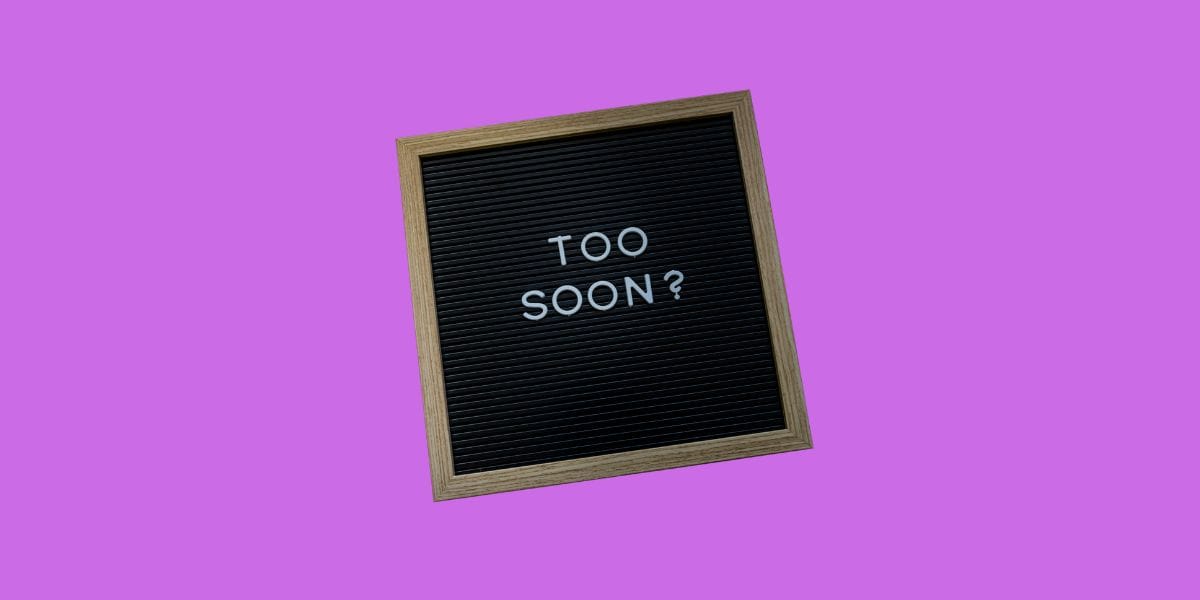If you use your super fund to save for your first home deposit, you may be able to pay less tax.
Previously, on Spaceship Learn:
- The First Home Super Saver scheme (FHSS) lets you save for your first home deposit in your super fund.
- You can do this by making voluntary super contributions.
- Voluntary super contributions could save you tax.
- You could put your tax savings toward your first home deposit.
- You need to be eligible to take advantage of the scheme.
When it comes to super, the aim of the game is to retire like a fat cat.
It’s good for you – and it’s good for the government – if you can retire as wealthy as you can. You get a better standard of living and the government gets to spend less on keeping you alive.
So the government incentivises voluntary super contributions, including by offering lower tax rates on some super contributions.
Understanding tax can help you pay less of it.
Some people set up salary sacrifice arrangements with their employers to take advantage of the super tax rules.
Generally, salary sacrifice contributions to super are taxed less than if you receive the same amount directly as normal salary.
And income earned on your account in a super fund gets taxed less than income on investments you have outside super.
This means making voluntary super contributions can go some way to reducing the impact of tax on your overall financial position.
You could use this tax advantage to save for your first home deposit.
Each year, if you’re eligible, you could save up to $15,000 toward your first home deposit in your super fund instead of your bank account by making eligible contributions.
Then, when you’re ready to buy your first home, you could withdraw up to $50,000 of your eligible contributions, plus associated earnings, while taking advantage of the tax benefits.
It’s called the First Home Super Saver scheme (FHSS) and it could save you thousands of dollars and associated time.
Are there any other savings?
Once the ATO has calculated the maximum release amount – that is, the amount of eligible contributions you’re able to withdraw using the scheme – it will add earnings on those contributions equal to the “shortfall interest charge” rate.
So what’s the catch?
You may pay more than 15% tax on some of your contributions
While you can make up to $15,000 worth of eligible contributions each year, only some of this money may be eligible for the 15% tax rate. This is because there’s a yearly $27,500 concessional contribution cap, which takes advantage of this tax rate, and the Super Guarantee payments made by your employer also fall under this amount.
If you’d like to take advantage of the full $15,000 yearly allowed amount, you may need to make non-concessional contributions which may be taxed more.
You will pay tax on your FHSS withdrawal
When you’re ready to withdraw your money, you can apply to the ATO for a FHSS determination. The ATO will calculate your Maximum Release amount which includes the eligible contributions you’ve made, as well as associated earnings.
The ATO will send your super fund a release authority requesting they send your FHSS to the ATO.
The ATO will then withhold the appropriate amount of tax, and any outstanding Commonwealth debts you might have, and send you the remaining balance.
The amount of tax withheld by the ATO will only be calculated on the concessional contributions and earnings part of your release amount, and will be at your expected marginal tax rate, including the Medicare levy, less a 30% tax offset.
This process generally takes between 15 and 25 business days.
The ATO will send you a payment summary at the end of the financial year which you need to include in your tax return. The great news is, you’ll receive a 30% tax rebate on the assessable amount.
You’ll need to declare your FHSS withdrawal in your tax return
You’ll need to declare your FHSS released amount along with the tax withheld in your tax return for the financial year in which you request the money .
While it counts as assessable income for tax purposes, it won’t have an impact on any family assistance, child support, or study loans you may be repaying.
What happens if you don’t use the money to buy your first home?
You have two options if you change your mind about buying after you’ve received your money.
If you don’t buy a home with your money, you’ll have to recontribute an amount at least equal to the assessable FHSS released amount, less any tax withheld on it to your super account as a non-concessional contribution. If you do this, you generally won’t be able to access this money again until you retire.
Or you can keep released amount but lose 20% of the your assessable FHSS released amount as tax.
There’s also an opportunity cost.
If you think you could grow your money more quickly using a different method, you’ll be prevented from doing so if it’s locked up in your super fund.
Anything else?
Another key risk of the FHSS is that the Government may change legislation in the future that could impact your plans.
Your super fund may also charge you fees that may add additional costs.
It could add some extra pressure if you’re not great with admin or organisation as you do have to keep track of your contributions, and make sure you follow the ATO’s rules around timing and notification at various stages.
It can take a while to get your money (up to 5 business weeks), and it could add time pressure to purchasing your first home, which may already be quite stressful.
So… is it worth it?
The impact that using the FHSS may have for you depends on your personal circumstances and your marginal tax rate. The higher your income, the bigger your savings may be. That’s because there’s a bigger difference between a higher marginal rate and the flat 15% super tax rate.
It can be worth asking a financial professional such as a financial planner or accountant if the FHSS is the right choice for you. Somebody who knows your personal circumstances can help you make the best choice.
It’s different for everyone, but here’s an example.
Stella earns $60,000 per year working in a grad role.
She’s saving up to buy a two bedroom unit in the suburbs so she can turn her second room into her WFH office.
Stella decides to salary sacrifice $10,000 into her super fund each year. She understands she’ll see less money in her bank account.
Stella gets taxed 15%, or $1500 on this money in her super fund. This means that each year she has $8,500 left over to save toward her deposit in her super fund.
When it’s time for Stella to request her contributions be released, she’ll pay a withholding tax at her expected marginal rate of 32.5%, minus a 30% offset. So, she’ll pay a 2.5% tax on the money. She will also receive associated earnings equal to the shortfall interest rate.
After five years Stella’s saved up $42,500 and decides to withdraw it. She pays 2.5% tax on this, which is $1,063. Not including other earnings, fees or charges, Stella has more than $41,000 to put toward her deposit.
What if Stella puts the money in a savings account?
Stella also considers saving $10,000 of her salary each year in a dedicated savings account. First it would be taxed at her marginal rate of 34.5%, including the Medicare levy of 2%, each year. This means she would have $6550 to put toward her house deposit each year.
After five years, Stella would have $32,750 to put toward her deposit.
Which super contributions are eligible for the FHSS?
Generally, eligible FHSS contributions are those you make on your own behalf, to your own super fund, by using salary-sacrificing, or via direct deposit from your bank account.
How can you make extra super contributions for the FHSS?
There are two different ways you can make eligible FHSS contributions, if you’ve decided it’s right for you.
1. You can salary-sacrifice straight into your super fund.
● This will be classed as a concessional, or before-tax contribution.
● Your employer should already be paying 10.5% of your earnings directly to your super fund. You can ask them to increase this amount. This increase will be an eligible extra contribution.
● Salary-sacrificed contributions are generally taxed at 15% up to the concessional contribution cap.
● This means you'll probably receive less money in your pay.
2. You can transfer money from your bank account into your super fund.
You can transfer money from your bank account into your super fund.
● This will generally be classed as a non-concessional, or after-tax contribution.
● You will have already paid tax on this money at your marginal rate.
● Note: contributions you’ve made from your bank account to your super fund can be counted as concessional if you claim a tax deduction on them.
Watch out for the super contribution caps
You have to be careful to not exceed your annual contribution caps, which come into play whether you’re taking advantage of the FHSS or not.
If you do, you may need to pay more tax. There are various exceptions that can apply to different people depending on their individual circumstances but generally the caps are:
| Concessional super cap (per financial year) | Non-concessional super cap (per financial year) |
|---|---|
| $27,500 including Super Guarantee payments (the money your employer must deposit to your super fund on your behalf) | $110,000 |
You can find out more about concessional and non-concessional super contributions at the ATO.
It does depend on your personal circumstances though which is why getting personal financial advice can be a good idea.
What else is there to know?
There’s a fair bit to know about the First Home Super Saver scheme. Your best bet is to seek out a finance professional who can give you personal advice. For more info, you can check out:
What is the First Home Super Saver scheme?
Are you eligible for the First Home Super Saver scheme?
How do you get your money from the First Home Super Saver scheme?
And visit the ATO.
The information in this article is prepared by Spaceship Capital Limited (ABN 67 621 011 649, AFSL 501605). It is general in nature as it has been prepared without taking account of your objectives, financial situation or needs. Before making any decisions in relation to the First Home Super Saver scheme based on the information in this article you should consider whether the information is appropriate having regard to your objectives, financial situation and needs.



